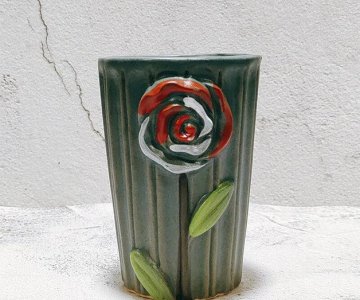how one can develop and care for polka dot plant

Heat temperatures and humidity are key to growing polka dot plants. Anticipate to water frequently until you get ample rainfall. Polka dot plants bloom sporadically, typically throughout the summer season, with small lilac or pink-coloured flowers on spikes. Pinch off these flower spikes to maintain the plant’s vitality centered on rising its vibrant foliage. Polka dot plants have change into a problematic, aggressive grower in Queensland and New South Wales, Australia. This plant also needs common feeding throughout the spring to fall rising season. In the U.S., it is not invasive and is protected to plant in-floor. In the U.S., it's not invasive and is protected to plant in-floor. Decide a planting site that is not in low gentle or too much gentle or else you possibly can count on the foliage colors to fade, lessening the plant's ornamental value. When grown outdoors, polka dot plants like a spot with some shade. Brilliant, indirect light is good indoors, similar to from an east- or south-going through window. Polka dot plants favor organically rich soil with good drainage. Combine in some pumice or perlite to improve soil drainage. An all-goal organic potting combine is often appropriate for these plants. Avoid letting the soil fully dry out, which may cause the foliage to wilt and make the plant struggle to outlive. These plants like a moderate amount of moisture within the soil at all times. Water the plant when the highest half-inch of soil has dried out. Give enough water to moisten the soil evenly. By no means let the soil develop into soggy, which may cause root rot and kill the plant. You will need to water container plants extra steadily than in-floor plants. Barely scale back watering within the winter and resume your routine as soon as development picks up again within the spring. These plants like humid situations, preferring a minimum humidity level of 50 p.c. Polka dot plants are only hardy in USDA growing zones 10 and 11, preferring temperatures over 60 degrees F. They must be planted outside in the spring after the risk of frost has handed and introduced large terracotta pots inside for those who plan to overwinter them well before the primary frost of the fall. Feed container plants with an natural fertilizer designed for houseplants as soon as a month throughout the warm rising season. Should you need to boost the humidity, you possibly can mist your plant’s leaves or place its pot on a tray full of pebbles and water as long as the bottom of the pot isn’t touching the water. These plants are heavy feeders. If planting in-ground, combine a layer of compost into the soil each spring. Inside the principle species, Hypoestes phyllostachya, there are numerous varieties; all are bred for their leaf coloration. Polka dot plants are likely to get leggy. You’ll need a pair of fresh, sharp scissors or pruning shears to keep the plant from creating long, lanky branches. To advertise a bushier growth behavior, lower or pinch back the highest two leaves on every stem weekly. Though flowers sound good, it's best to clip them when they begin showing to increase the rising season of your polka dot plant. The flowers aren't as ornamental as the leaves anyway. The plant will die off or enter dormancy as soon as it has finished flowering. Actively trimming may also help the plant to grow healthier and extra vigorously. Polka dot plants may be grown from seeds or stem cuttings. In case you are starting from seeds, sow them within the early spring. You'll be able to propagate from cuttings anytime; nevertheless, your success charge of rising a wholesome plant will likely be finest within the spring or summer. Trimming your polka dot plant is a good way to take care of a bushier, healthier plant. If you reside in a non-tropical local weather, your polka dot plants will die once the first frost comes. When you discover your plant is dying outdoors, stem reducing is a great option to revive your plant indoors. Let's study the right way to propagate your polka dot plant from a stem chopping rooted in water or moist soil. 1. To propagate the polka dot plant using stem cuttings, you will want a sterilized pair of scissors or shears. You'll need a clear jar of water or a pot with a well-draining potting combine or peat moss. Optionally, you should utilize a rooting hormone. 2. Minimize a chunk of stem from any a part of the plant but be sure you will have a minimum of a 2-inch piece. If rooting in soil, you'll need clear plastic wrap. A 4-inch piece is right. 3. If rooting in a jar of water, keep the water level even by adding water because it evaporates. It might take two weeks or several months earlier than the foundation grows about 2 inches. Every other week, change the water entirely to inhibit bacterial or algae growth until the foundation grows as much as 2 inches lengthy. 4. If rooting within the soil, place the fresh-cut end of your cutting into potting combine or peat moss and keep it evenly moist. 5. Cowl the chopping with clear plastic wrap till the stem develops leaves or other apparent progress. Optionally, you'll be able to place some rooting hormone on the contemporary-reduce finish earlier than planting it about an inch deep within the soil to assist the rooting course of. It may take a number of weeks to several months. 6. To test if the cutting has set roots, gently tug at the reducing to see if it has give or if roots keep the stem rooted within the soil. Solely transplant the reducing exterior as soon as the threat of frost is gone. 7. The plant's cutting is ready to be repotted once the chopping has established a number of inches of recent growth. Place the plant in a sunny location. Sow seeds on the surface of heat, moist soil. The seeds should sprout in a couple of days. Solely plant outdoors after the threat of frost is over. As soon as the seedling has grown a number of inches-usually in a few weeks-it is able to transplant into a bigger container or plant outdoors. Its roots have nowhere to grow. If a plant outgrows its container, it turns into pot bound or root sure. A sure signal your plant has outgrown its pot is when the roots start growing out of the drainage holes. The best time to repot a polka dot plant is in the spring after its dormant period. Gradually improve the plant's pot measurement. Too massive a pot encourages the roots to deal with growing beneath the soil line, which is not good for the plant's upward progress. Since this plant is a tropical plant, it won't survive frosty weather. The new pot shouldn't be greater than two inches wider and not more than two inches deeper than the previous pot. If saved outdoors in a container, deliver these plants indoors to a partially sunny indoor spot. Before the primary frost, you possibly can lower stems from the plant, root them indoors in a small potting container or jar of water. Within the spring, you'll be able to replant it in the garden after the risk of frost is over. Frequent pests that enjoy polka dot plants are mealybugs, aphids, and whiteflies. Typical diseases associated with polka dot plants are root rot, leaf-spot diseases, and powdery mildew. Telltale indicators of those bug infestations or disease include foliage that's discolored, leaves that have holes or in any other case seem unhealthy, and small bugs moving on the plants. The shortening of daylight hours tells the plant that the growing season is coming to a detailed, encouraging its flower development. Its small lilac or pink-colored racemes or flower stalks are insignificant and never known for their scent or appearance. This plant flowers in late summer time or early fall. When flowers emerge, it triggers plant to begin to go dormant. So, generally if you need your plant to last longer, it is best to cut or clip off the flowers as they begin forming. Here are the most common issues and a few potential options. Curling leaves and fading leaf shade are sometimes attributable to an excessive amount of solar or too little. Polka dot plants are comparatively easy to develop once you get their rising conditions right. However, it needs to be saved out of hot, direct sunlight. Hypoestes phyllostachya needs bright, oblique light to take care of its color. If it is in a container, transfer it to a shadier spot. If it's in-ground, suppose about giving it some cover. Inadequate water and humidity could cause the polka dot plant's leaves to show brown or begin drooping. Additionally, a lot sun can burn the leaves. Hard water and overfertilization are other causes for a polka dot plant's leaves turning brown. Overwatering causes yellowing of the plant's leaves. Adjust your humidity or watering habits to see if you can revive the plant. Overwatering can also result in different severe problems like root rot and powdery mildew. If you happen to discover leaves yellowing, scale back the quantity of water you give the plant and make sure you're using potting soil with good drainage. Soggy soil causes the yellowing of the leaves and leaf drop. Polka dot plants are easy to keep up and propagate. Are polka dot plants straightforward to care for? How briskly does polka dot plant develop? It may possibly generally be tough getting its growing situations good, however as soon as established, it's usually good to go. These plants have a moderate progress rate, though they are inclined to get picky with their rising conditions and tend to decelerate their growth price if they don't seem to be good. Polka dot plants usually complete their life cycle within a year. How lengthy can polka dot plant reside? But, you'll be able to prolong their life by propagating stem cuttings at the tip of the growing season.







Ingen kommentarer endnu